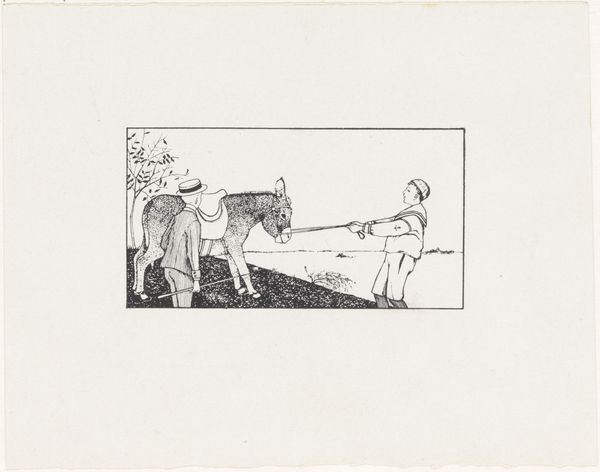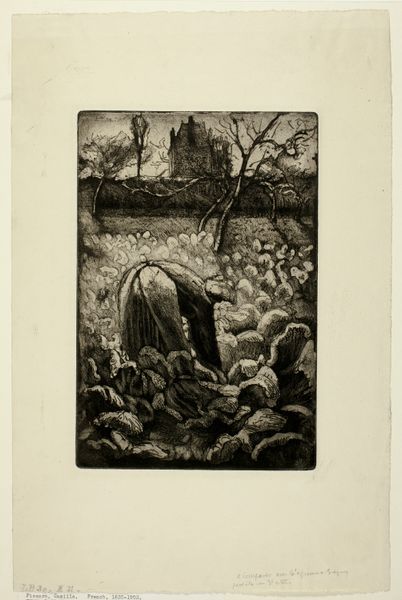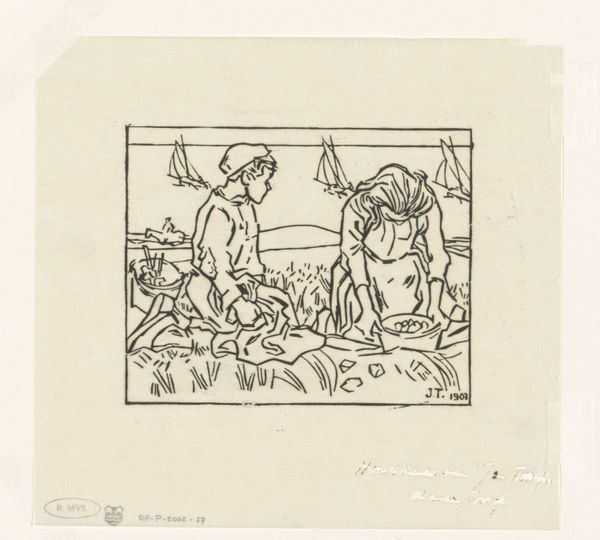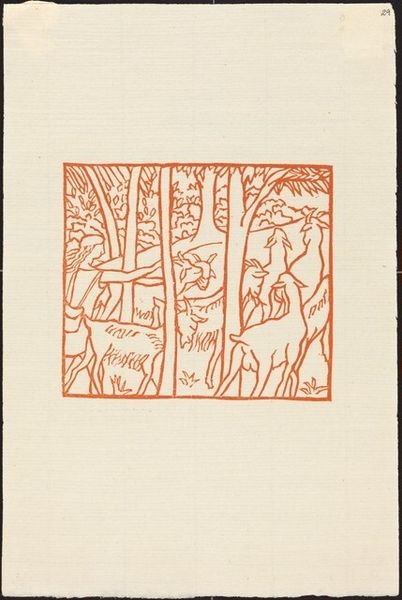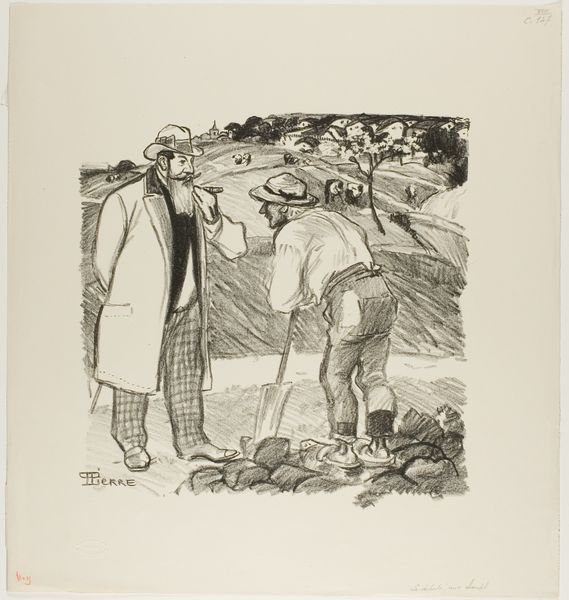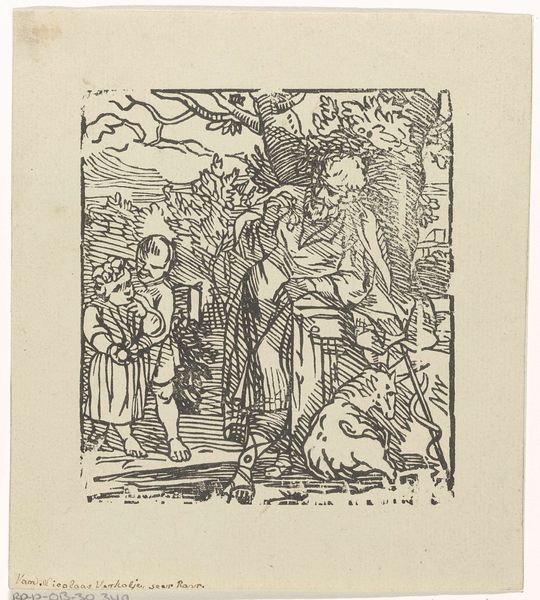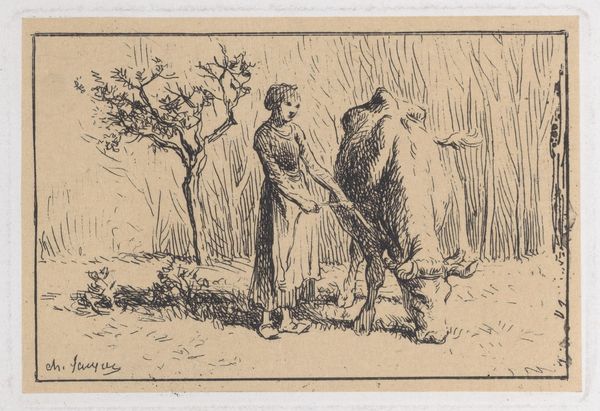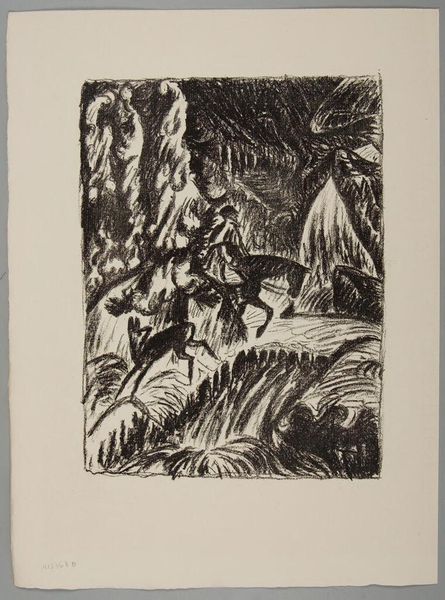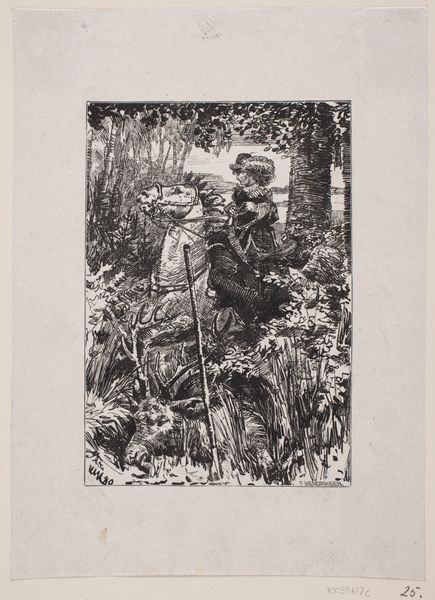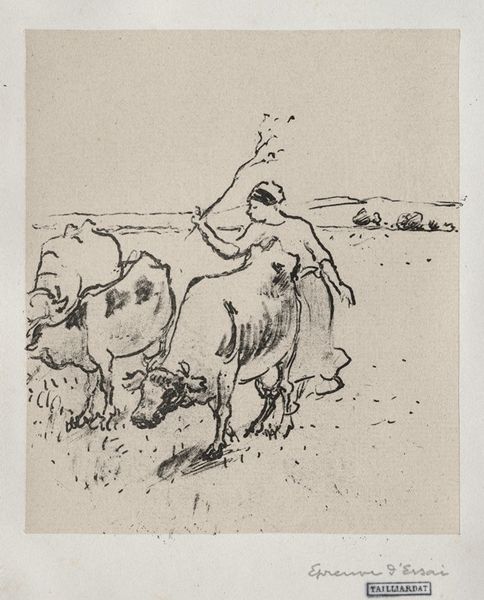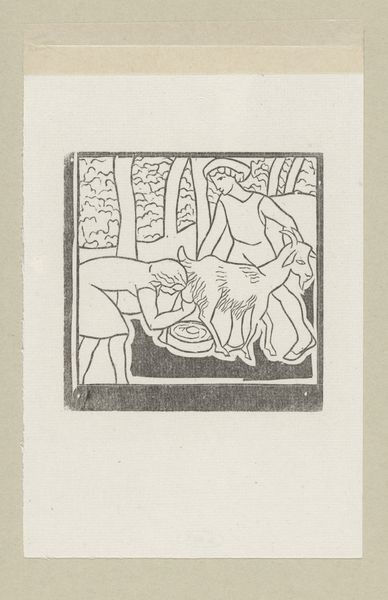
Dimensions: height 251 mm, width 197 mm
Copyright: Rijks Museum: Open Domain
Curator: I am immediately drawn to the somber tone evoked by this monochrome scene, almost like a memory fading at the edges. Editor: Well, it is a woodcut print after all. This is "Herder met hond en geiten bij knotwilg" by Pierre-Georges Jeanniot, likely created around 1895. It represents a shepherd, his dog, and a flock of goats resting under a pollard willow tree. Curator: The way the artist renders the texture – the wiry coat of the dog, the rough bark of the tree, it is very compelling. It gives this rustic, genre painting the feel of old engravings with an almost archaic appeal. Can you expand on that feeling? Editor: Jeanniot was known for his prints, drawings, and illustrations, so it's fitting that this is one of his woodcut pieces. Contextually, there was a widespread fascination with rural life during the late 19th century. Artists and intellectuals romanticized agricultural simplicity and sought to depict this perceived authenticity, something that perhaps Jeanniot tapped into as well. Curator: I note the curious way the artist creates a composition solely based on values of light and dark. It really is only tonal contrast, with only little difference in values, to help communicate recession into depth; not one sharp contour or gradient value to communicate this effect. A sort of subjective naturalism I should say. Editor: True. But it is in these stark contrasts of dark and light that drama and depth emerge. The placement of the figures is strategic. The pollard willow and figures seem staged within that area with the surrounding trees fading into the background as light fills the empty planes between forms. It evokes this nostalgic reverence. One must wonder if the proliferation of this idealized countryside image, had any true bearing in peoples minds. Curator: I agree. Despite the static composition, one cannot dismiss its inherent artistic value. Editor: From a socio-historical point of view, images like these reinforce romantic notions of a simple life close to nature. But examining these pieces allows us to discuss and re-examine our collective understanding.
Comments
No comments
Be the first to comment and join the conversation on the ultimate creative platform.
